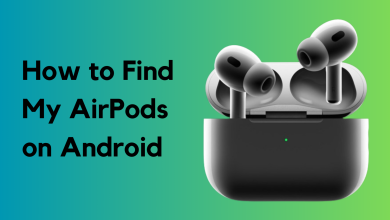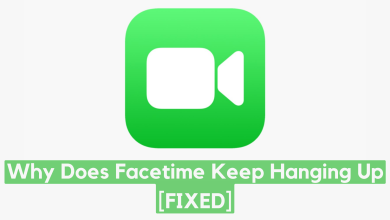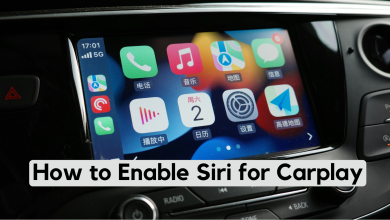Facetime Not Working? Try these 14 New Fixes
Facetime might stop working on your iOS device due to issues with the app’s configurations or with the operating system itself. The issue occurs when either Facetime fails to launch, a call is not going through/coming in, or if the call comes/goes and it drops immediately.
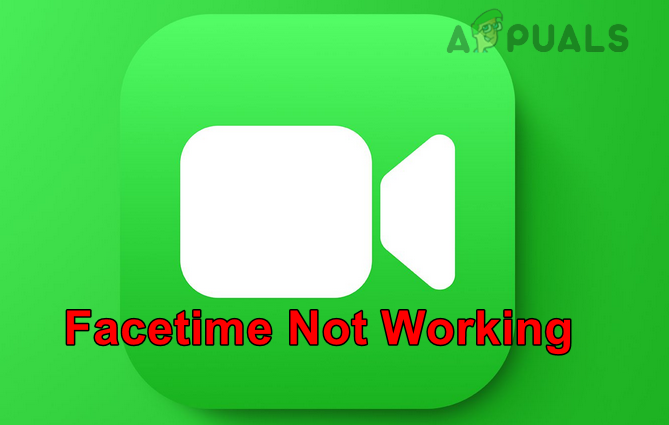
1. Force Restart the Problematic Device
Restarting your iPhone or other devices can fix this issue as it can be caused by a minor glitch as well.
- Tap on the iPhone’s volume up button and then immodestly tap on the phone’s volume down button.
- Now press and hold the iPhone’s power button.
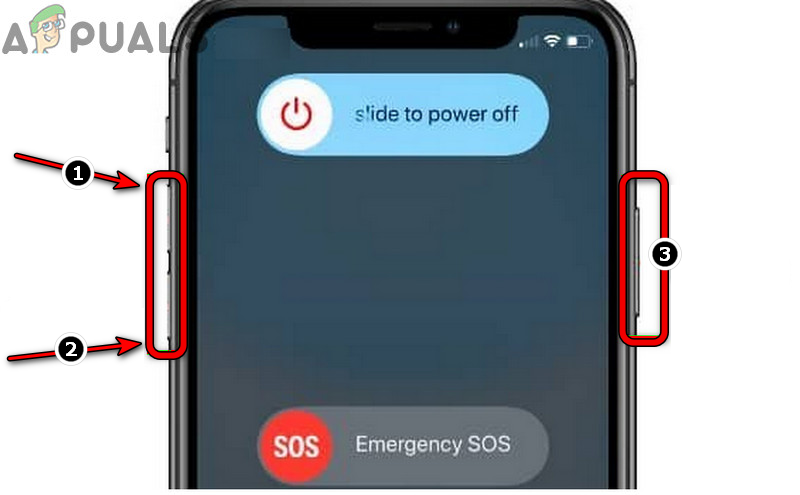
Force Restart the iPhone - Then wait till the Apple logo is shown on the screen and afterward, release the iPhone’s power button. Make sure that you do not release the power button when the power menu is shown.
- Now, wait till the iPhone is properly powered on, and afterward, check if the Facetime is working fine.
2. Update the OS of the Problematic Device
Facetime might also not work if the device’s operating system is outdated as it can make the device incompatible with Apple servers and due to this incompatibility, the execution of essential Facetime modules is limited. Here, updating the OS to the latest version may solve the issue.
- Firstly, make sure the phone is charged fully and connected to a Wi-Fi network.
- Then, go to the Settings of your Apple iPhone and select General.
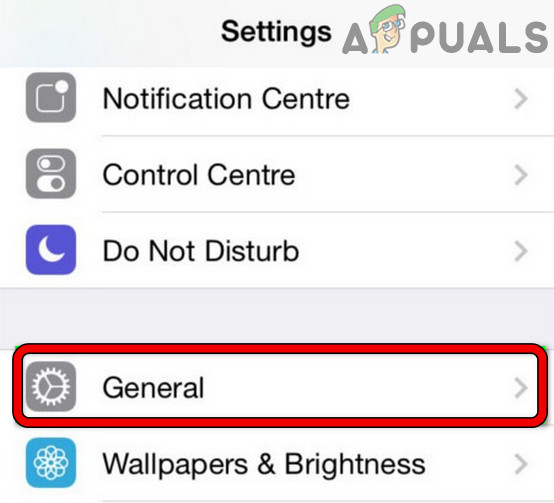
Open General Settings of iPhone - Now open Software Update and if an iOS update is available, download the update.
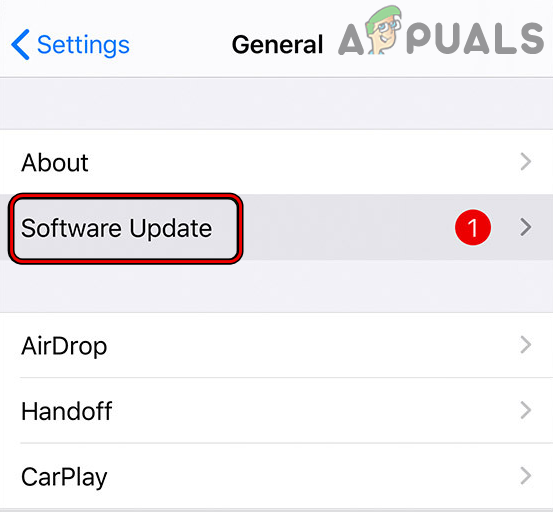
Update Software of iPhone - Once downloaded, tap on Install and follow the prompts on the screen to complete the process.
- Then restart your iPhone and upon restart, check if the Facetime is working fine.
- If not, deregister your number from iMessage, and afterward, check if the Facetime issue is resolved.
3. Disable Low Power Mode
If a device is running in its low-power mode, then the modules essential for the operation of Facetime might be barred from execution to conserve the device’s power. Here, disabling the low power mode may clear the Facetime issue. For illustration, we will go through the process of disabling the lower power mode of an iPhone.
- Launch the iPhone’s Settings and select Battery.
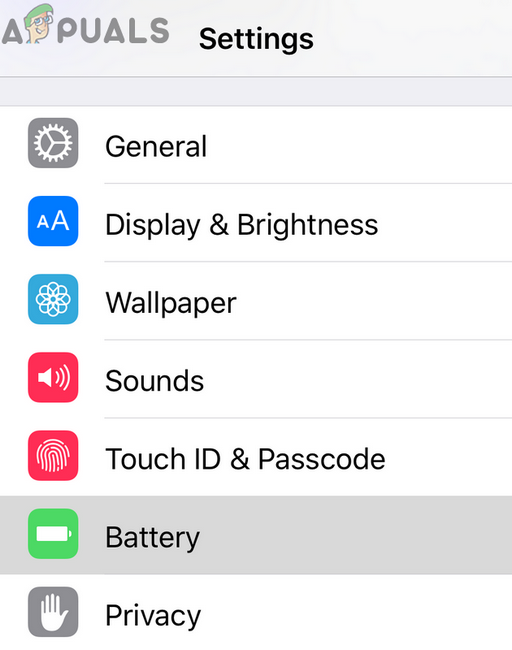
Open Battery in iPhone Settings - Now disable the Low Power Mode by toggling its switch to off and then check if Facetime is working.
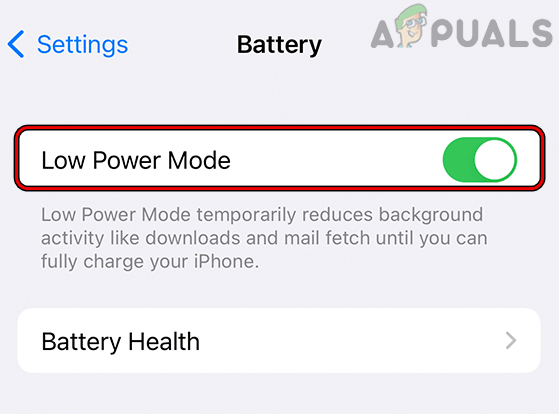
Disable Low Power Mode of the iPhone - If not, plug your iPhone into the charger and while the phone is connected to the charger, perform a force restart on your iPhone (discussed earlier).
- Then wait till the iPhone is fully charged and afterward, check if the issue is resolved.
4. Enable Cellular Data for the Facetime
If the cellular data for Facetime is not enabled in your device settings, then that could also cause the problem under discussion when using the cellular data of the device. In such a case, enabling Cellular Data for Facetime in the device settings may clear the issue.
- Go to Settings on your iPhone and open Notifications.
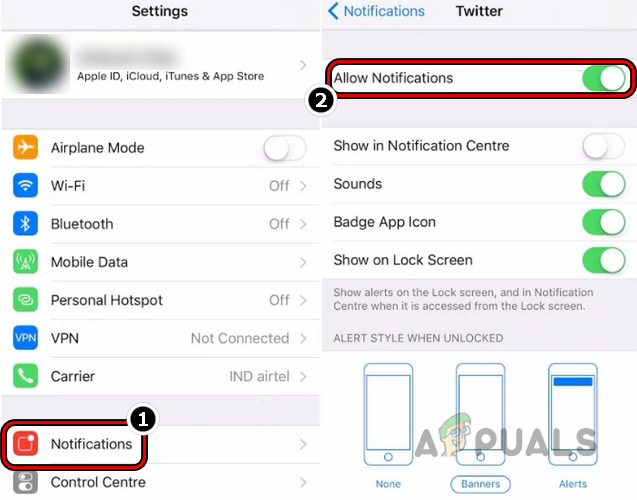
Disable iPhone Notifications - Now disable Notifications and wait for a minute.
- Then enable Notifications and hit the back button.
- Now, in the iPhone Settings, open Cellular and locate Facetime.
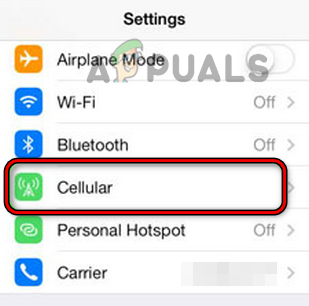
Open Cellular Settings of Your iPhone - Then enable cellular data for Facetime and if it is already enabled, disable/enable it.
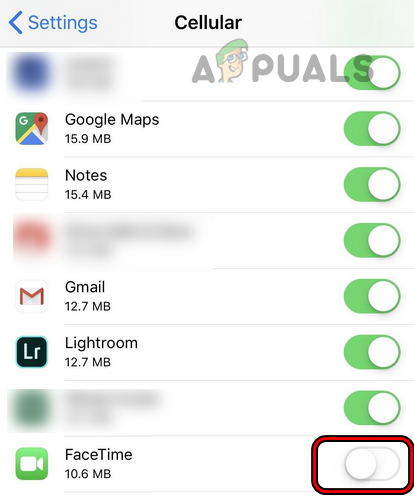
Disable Facetime in the Cellular Settings of Your iPhone - Now launch Facetime and check if it is working as expected.
5. Disable and Enable Facetime in the Device Settings
Disabling and enabling Facetime in the device settings may resolve the issue. For a better interpretation, we will go through the process on an iPhone.
- Go to your iPhone Settings and select Facetime.
- Now disable Facetime by toggling its switch to off and then shut down (not restart) the iPhone.
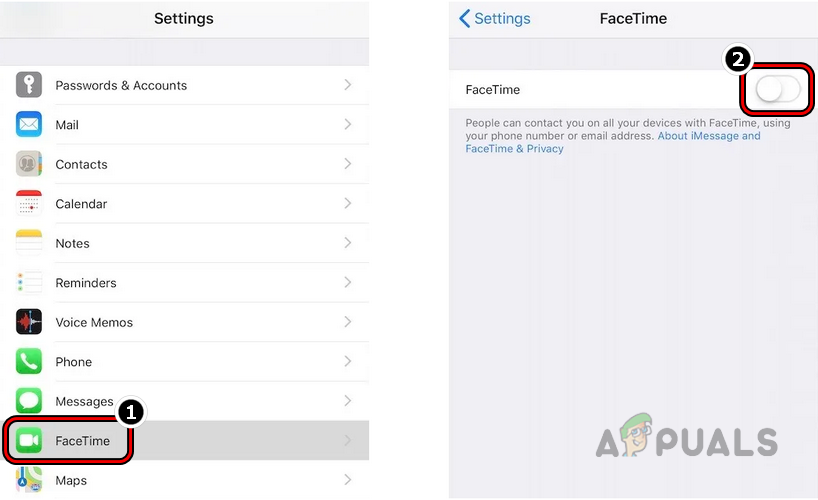
Disable Facetime in the iPhone Settings - Then wait for a minute and afterward, power on the iPhone.
- Now enable Facetime and check if it is working fine.
6. Re-log into the Facetime
Logging into Facetime again can fix the issue as it re-initiate the whole connection with Apple servers.
- Launch the Settings of your iPhone and open Facetime.
- Now tap on the Apple ID and in the dialogue box shown, press on the Sign Out option.
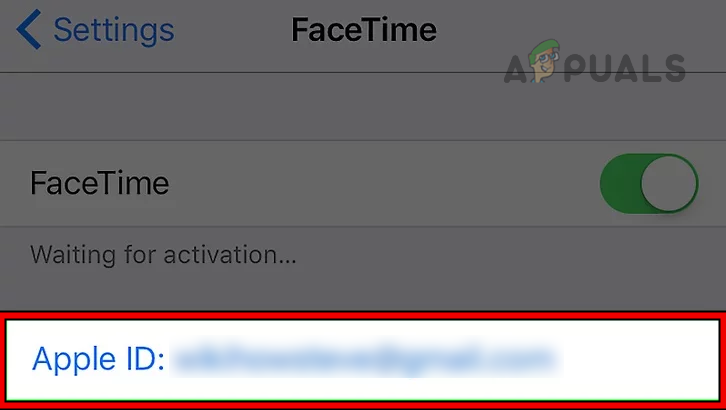
Tap on the Apple ID in the iPhone’s Facetime Settings - Then confirm to Sign Out of Facetime and afterward, force restart your iPhone.
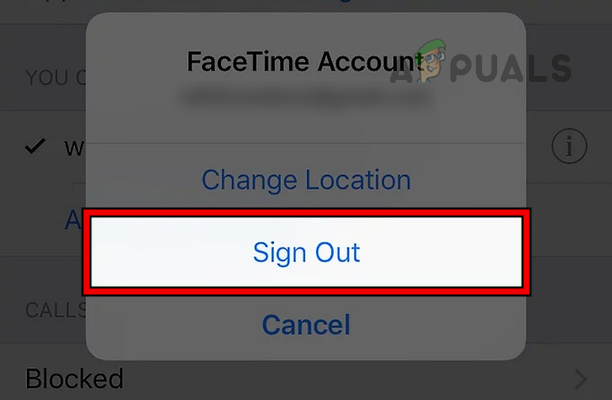
Sign Out of Facetime on iPhone - Upon restart, sign into Facetime to check if it is working fine.
- If not, launch your iPhone Settings and tap on your user ID.
- Now open iCloud and Sign out of iCloud. You may choose to keep or remove the data from the iPhone.
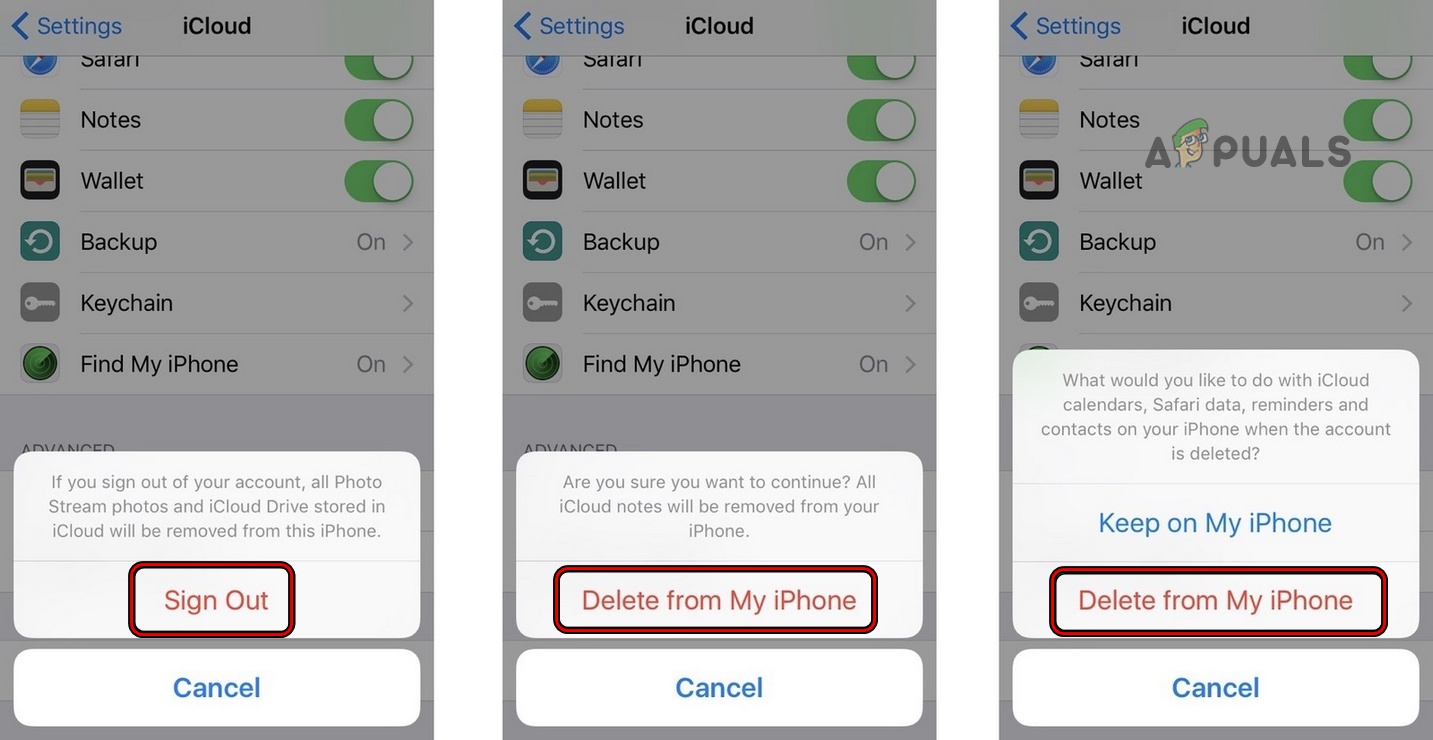
Sign Out of iCloud on iPhone - Then force restart your iPhone and upon restart, launch Facetime and check if it is working fine. If asked to, sign into iCloud.
7. Change the Date and Time Settings
Facetime servers may fail to authenticate the data packets with the wrong date/time stamps. Here, changing the data and time settings of your device may solve the problem.
- Go to the iPhone Settings and open General.
- Now select Date & Time and disable Set Automatically by toggling its switch to off.
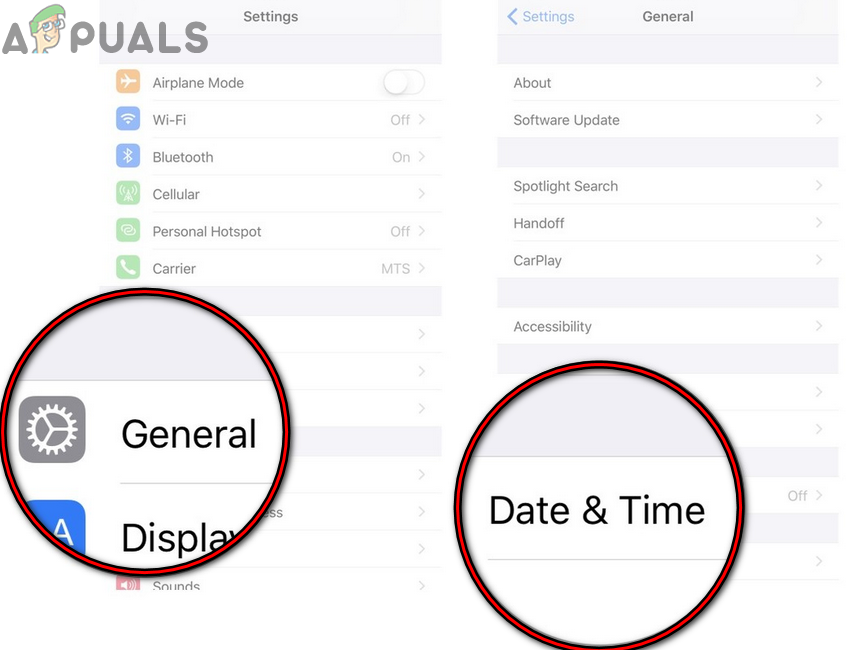
Open Date and Time Settings on Your iPhone - Then manually set the correct date/time on the iPhone and afterward, force restart the iPhone.
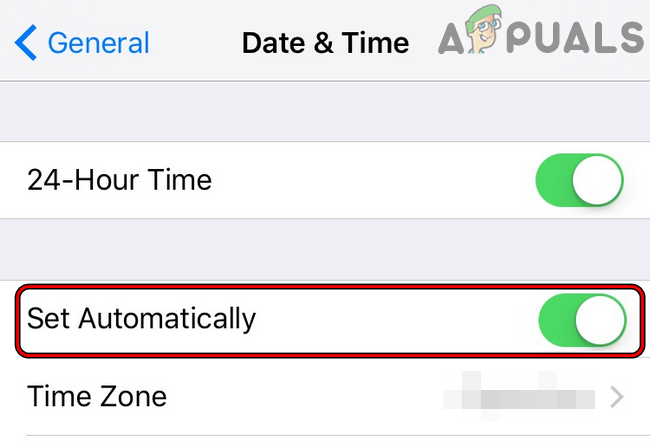
Disable Set Automatically for iPhone’s Date & Time - Now check if Facetime is working normally.
- If not, check if enabling back the Set Automatically option in the Date & Time settings of the phone resolves the issue.
8. Change Location Under Facetime Settings
If the location under Facetime settings is different than your actual location, then Apple servers may fail to authenticate the legitimacy of your device and cause Facetime not to work. Follow these steps to change your location:
- Go to the iPhone Settings and open Facetime.
- Now, under the CallerID list, open the Apple ID (Apple email) link and then tap on Change Location.
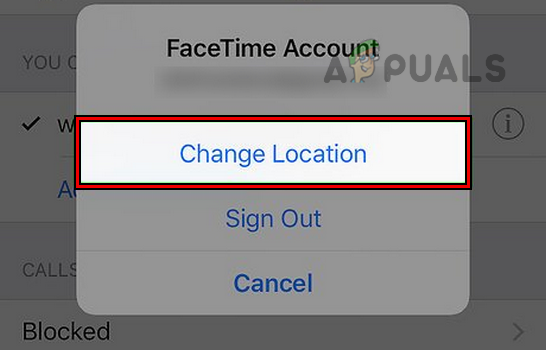
Change Facetime Location on the iPhone - Then change the location to your actual location e.g., if you are in the USA and the Facetime location is set to the UK, then set the Facetime location to the USA.
- Now tap on Save and afterward, check if Facetime has started to work fine.
9. Disable the iCloud Contacts
If any of your iCloud contacts are not saved in proper format (like an emoji or a special character in the contact’s number), then that could stop Facetime from working properly as it may fail to query the status of the particular contact.
In this context, disabling iCloud contacts may resolve the issue as it can confirm the issue is with a contact and you can edit that particular contact to remove any emojis or special characters from that contact. Let us discuss this from an iPhone’s perspective.
- Launch the iPhone Setting and tap on your Apple ID.
- Now open iCloud and disable Contacts by toggling its switch to off.
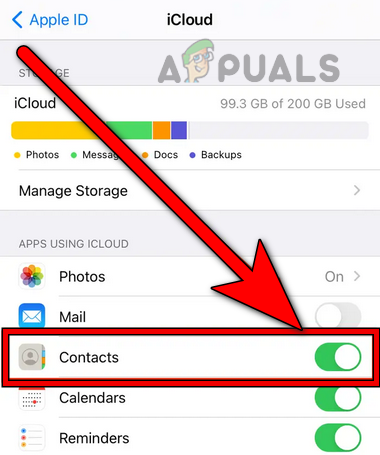
Disable the Contacts Sync of iCloud on the iPhone - Then launch Facetime and check if it is working fine. If so, then open each contact one by one and check if any of the contacts have emojis or special characters in them. If that is a challenging task, export contacts and then delete the contacts one by one to find the problematic ones. Once found, edit the problematic contact in the backup to resolve the issue.
10. Try Another Network or Network Type
Facetime might also not work if your ISP or carrier does not support Facetime or is hindering the proper execution of the essential Facetime modules. Here, trying another network or network type may clear the Facetime issue.
- If the issue occurs on the Cellular, check if connecting to a Wi-Fi (or vice versa) clears the issue.
- If not, disconnect your device (like an iPhone) from the current Wi-Fi network and disable the device’s Cellular data.
- Now connect the device to another Wi-Fi network (like a phone’s hotspot) and check if Facetime is working fine.
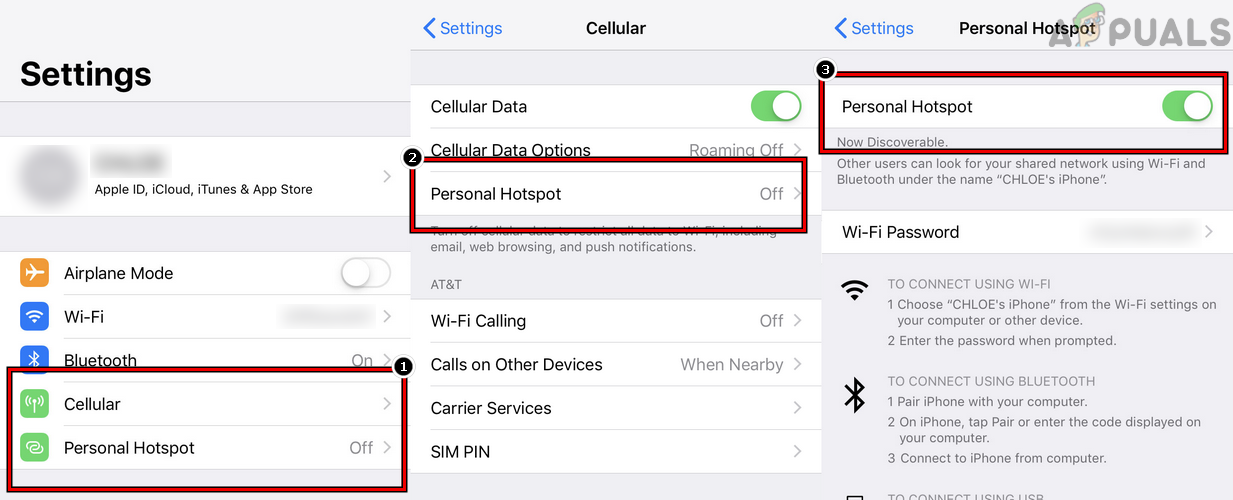
Enable Hotspot on the iPhone
11. Reinstall Facetime on your Device
Facetime will also not work if the installation of the Facetime app on your device is corrupt and due to this corrupt installation, the essential app modules are failing to execute. In this context, reinstalling the Facetime app on your device may resolve the issue. For illustration, we will go through the process of reinstalling the app on an iPhone.
- On the Home screen of your iPhone, tap and hold the Facetime icon.
- Now select Remove App and tap on Delete App.
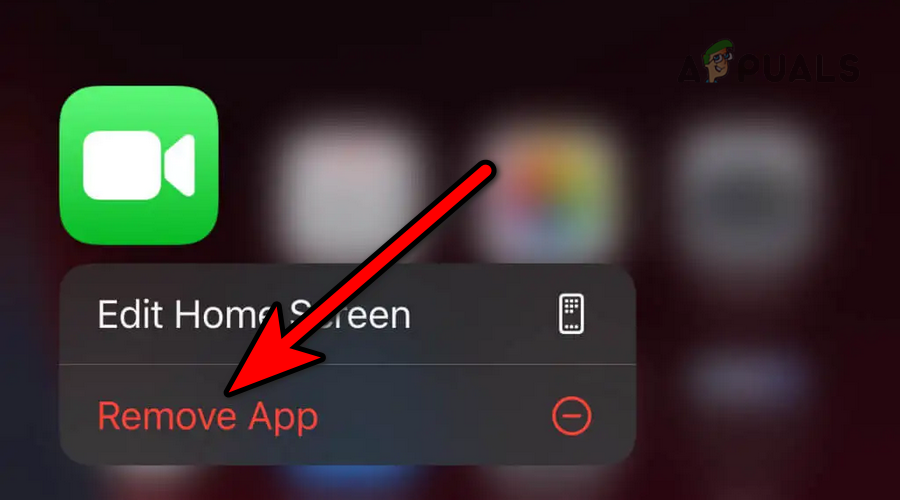
Remove the Facetime App on the iPhone - Then confirm to Delete the Facetime app and afterward, power off your iPhone.
- Now, wait for a minute and power on your iPhone.
- Then open the iPhone Settings and select Messages.
- Now disable iMessage and hit the back button.
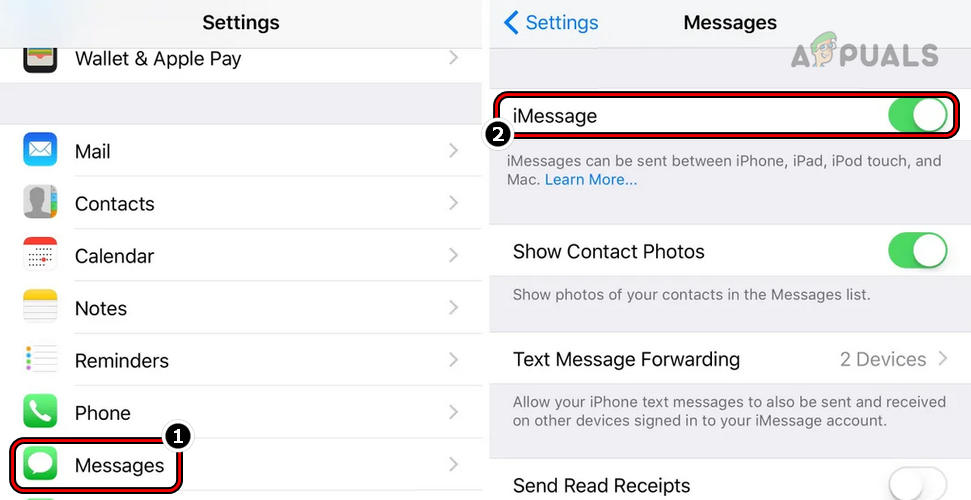
Disable iMessage on the iPhone - Then open Facetime and disable it.
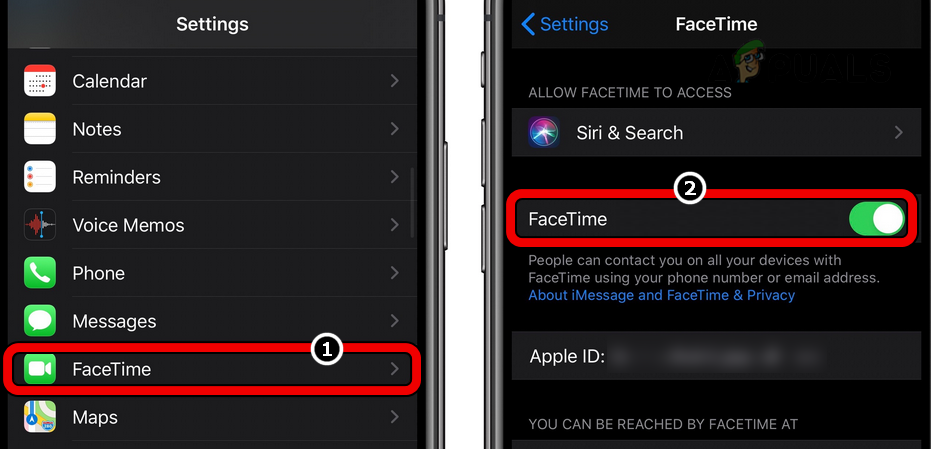
Disable Facetime in the iPhone Settings - Now power off the iPhone and wait for a minute. Afterward, power on your iPhone.
- Then open iMessage in the iPhone Settings and enable it.
- Now sign into iMessage using your Apple ID and hit the back button.
- Then open Facetime and enable it.
- Now sign into Facetime using your Apple ID and afterward, launch AppStore.
- Then search for Facetime and install it.
- Now launch Facetime and sign in using your Apple ID to check if Facetime is working fine.
12. Reset the Network Settings
Facetime might also not work if the network settings of your device are corrupt and due to this corruption, Facetime is failing to access the online resources essential for its operation. In this context, resetting the network settings of the problematic device may solve the Facetime problem.
For elucidation, we will discuss the process of resetting an iPhone’s network settings to their defaults. Before moving on, make sure to note down/back up the info (like the Wi-Fi credentials) required to re-set up a network on your iPhone.
- Launch the iPhone Settings and select General.
- Now open Reset and tap on Reset Network Settings.
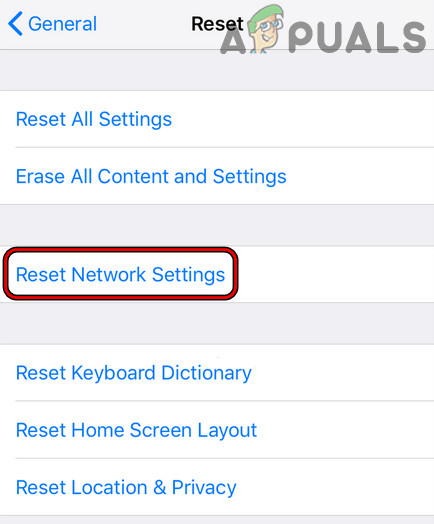
Tap on Reset Network Settings on iPhone - Then confirm to reset the iPhone’s network settings to the defaults and once done, restart your phone.
- Upon restart, re-set up the network on your iPhone (like adding a Wi-Fi connection), and afterward, launch Facetime to check if it is operating fine.
- If not, check if resetting all the settings of your iPhone resolves the Facetime issue.
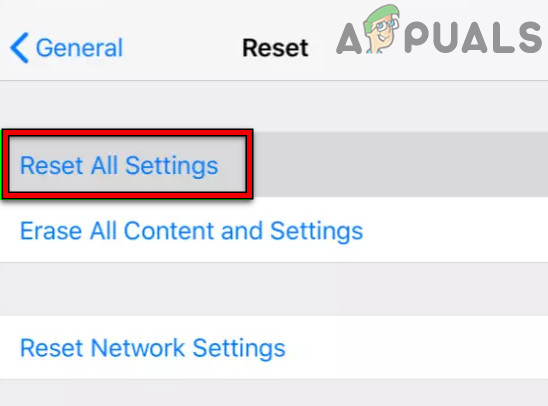
Reset All Settings on Your iPhone
13. Try Another Account on the Device (for macOS)
Facetime might not work if your user profile on the device is corrupt and due to this corruption, the essential Facetime modules are failing to execute. Here, creating another account on the device and using Facetime through that account may clear the problem.
- Launch Mac’s System Preferences and select Users & Groups.
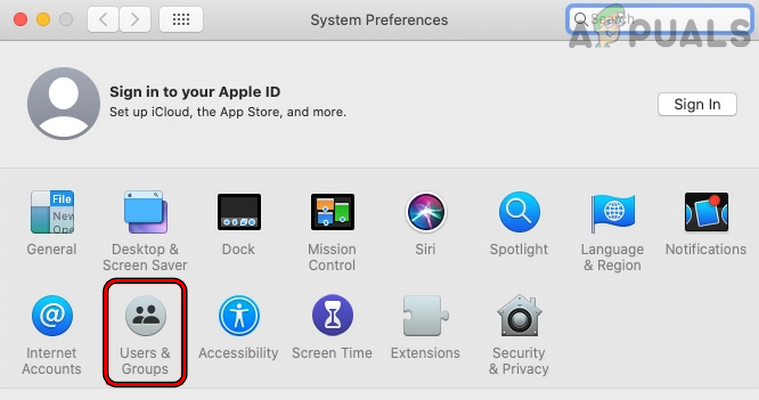
Open Users & Groups in Mac’s System Preferences - Now click on the padlock icon (near the left bottom) and if asked to, enter the administrator password.
- Then, near the padlock icon, click on the plus icon and open the New Account dropdown.
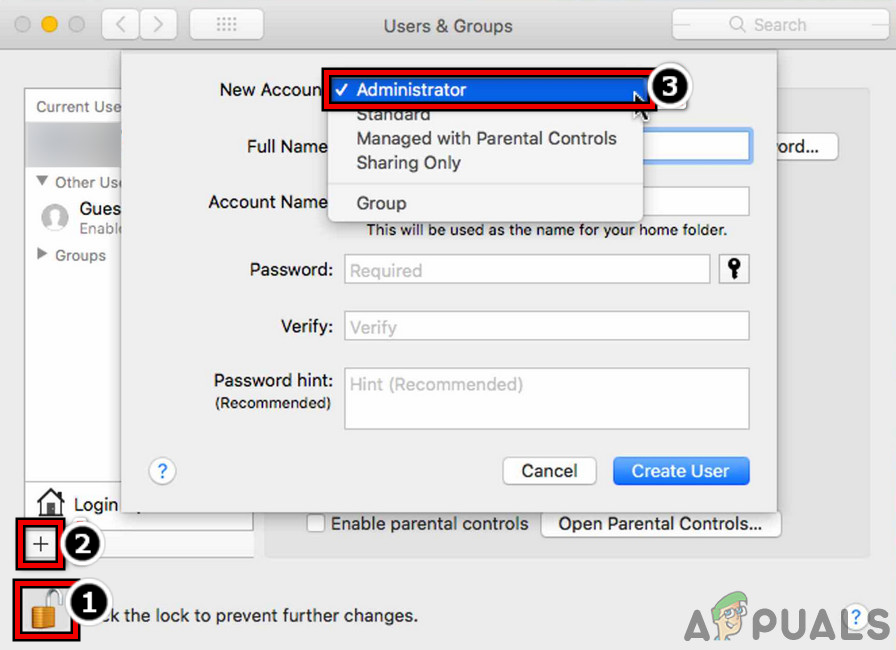
Create a New Administrator User on MacBook - Now select Administrator and enter the password details.
- Now click on Create User and once created, log out of the current user account.
- Then log in using the newly created account and launch Facetime to check if it is working fine.
14. Reset Your Device to the Factory Defaults
If none of the above cleared the Facetime issue at hand, then the corrupt operating system of the device could be the root cause of the problem under discussion. In this scenario, resetting your device to factory defaults may clear the Facetime error.
For illustration, we will go through the process of resetting an iPhone to its factory default state. Before proceeding, make sure to back up your iPhone’s data and fully charge the iPhone. Also, upgrade your data plan to a higher level before factory resetting your iPhone if you are using your carrier’s most basic plan.
- Launch Settings of your iPhone and open General.
- Now select Reset and then tap on Erase All Content and Settings.
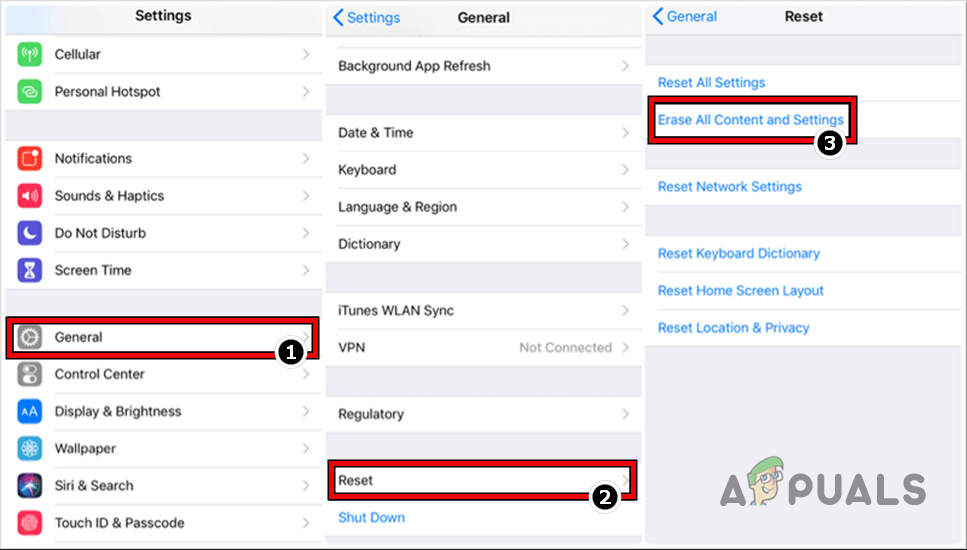
Reset iPhone to the Factory Defaults - Then confirm to reset your iPhone to its factory default state and afterward, wait till the process completes.
- Once done, set up your iPhone as a new device (do not restore from a backup yet) and hopefully, Facetime will be working fine now. If so, then you may restore it from a backup.
If that did not work and you are using Facetime on multi-devices (iPhone, iPad, Mac, etc.), then check if removing or disabling Facetime from all the devices but one resolves the issue. If the issue persists, then you may contact Apple support and ask them to check if your Facetime account is blacklisted.

